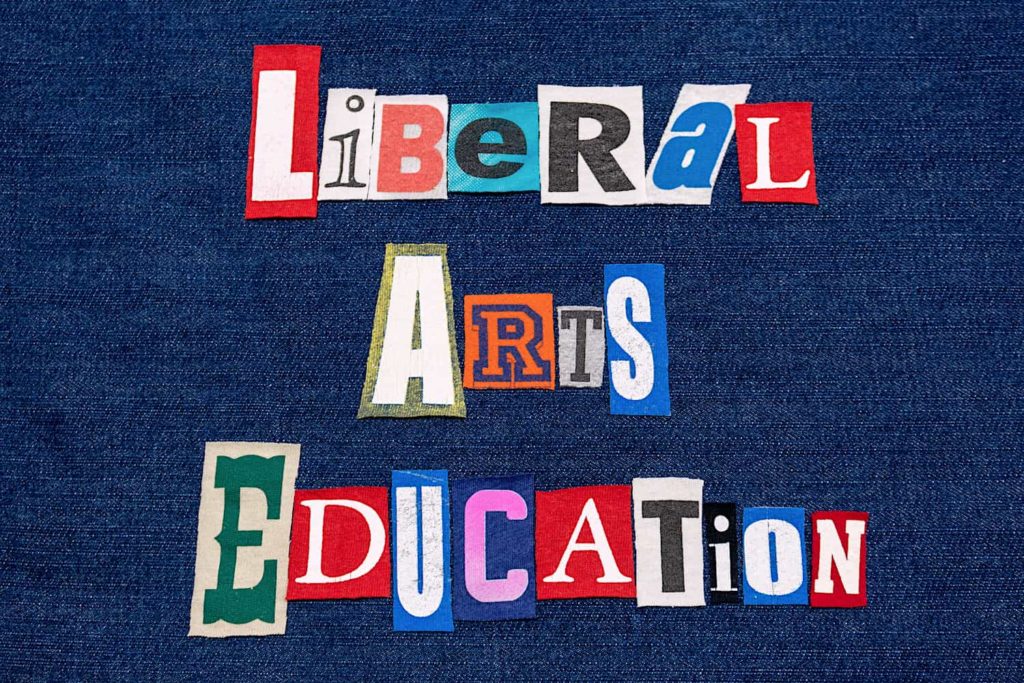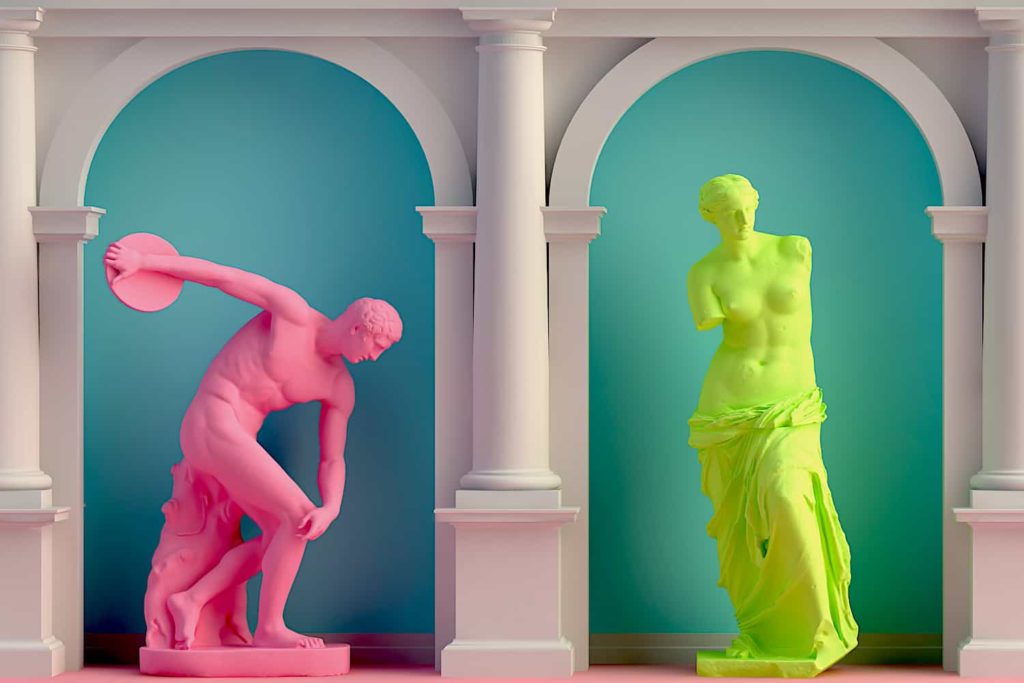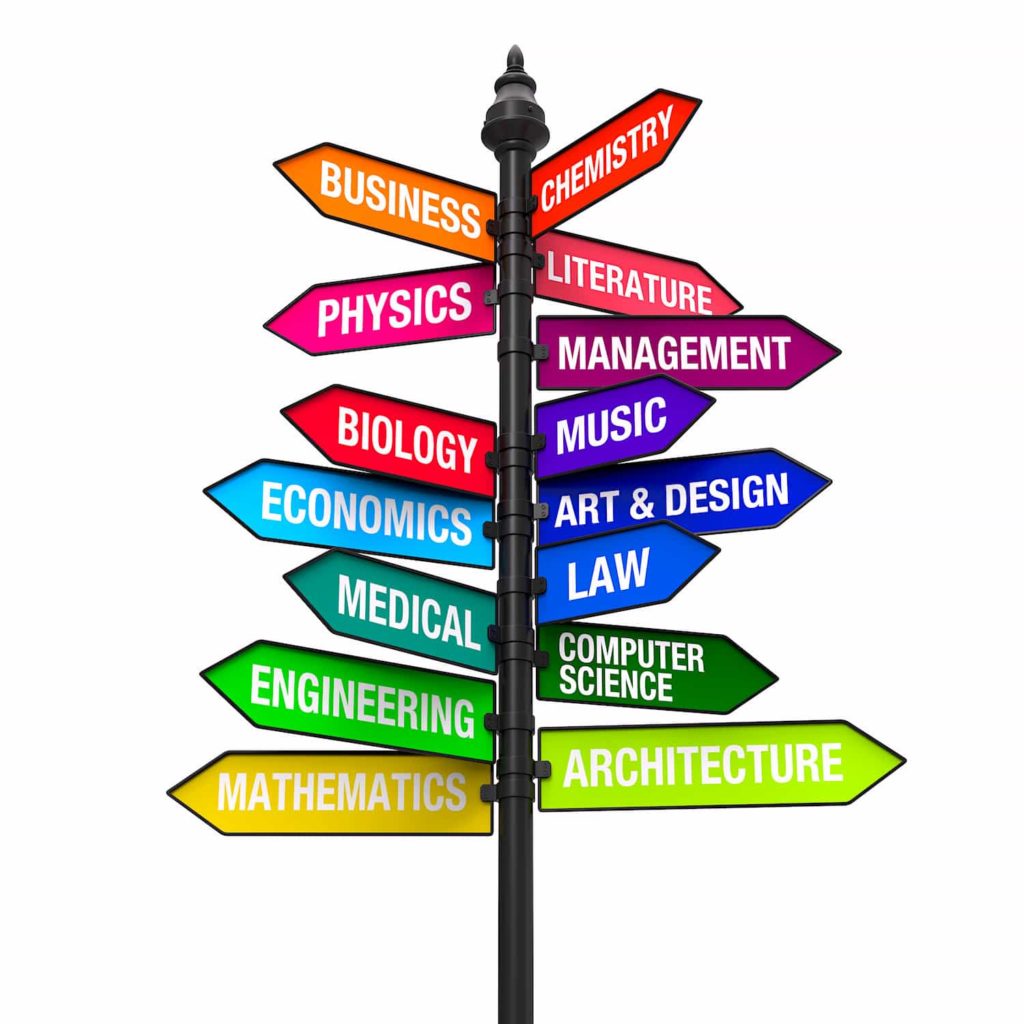
Liberal Arts for Creativity and Career
There is a popular misconception that Liberal Arts degrees do not provide a good return on the investment, even though most studies comparing Liberal Arts majors to other programs of study show otherwise. It is well known that the CEOs of many top U.S. companies have Liberal Arts degrees, and yet the stereotype of such programs being impractical persists.
This post first explores what a Liberal Arts education is and then investigates the ways that such an education enhances creativity. Far from being impractical, this type of education fosters expanded imaginative abilities with potential long-term career benefits, including excellent preparation for a continually changing job market.
Liberal Arts in Myth and History
The Liberal Arts suffer from many popular misconceptions. Some see the term “Arts” in name and automatically assume an education focused exclusively on poetry and painting. The Liberal Arts certainly include the Fine Arts, but they are much broader than this.

The concept of the Liberal Arts has a long history that comes down to us through Classical Antiquity, the Middle Ages, and the Early Modern Period. In its original formulation, the Liberal Arts specifically referred to the seven subjects of Grammar, Logic, Rhetoric, Arithmetic, Geometry, Music, and Astronomy. From the beginning, nearly half of the Liberal Arts were made up of what we would now consider STEM fields (Science, Technology, Engineering, and Math).
Liberal Arts in the United States
In the United States, the term “Liberal Arts” is used at least three different ways, which adds to the confusion. First, small private colleges are often called “Liberal Arts schools,” and so for many in this country, the term conjures up ideas of student-centered residential campuses in small college towns.
The term is used differently in bigger universities. Large state schools and research institutions are broken down into smaller units referred to as colleges or schools. The largest of these colleges often centers on the Liberal Arts, which is the second way that the term is used. The “College of Liberal Arts” (or a similarly named school) tends to be the largest college within a university. It often contains departments in the Humanities (such as Philosophy and Literature), the Fine Arts (such as Theater and Studio Art), and the Social Sciences (such as Psychology and Sociology).

The third way people use the term “Liberal Arts education” is the very broadest and refers to a philosophy of higher learning. This type of education emphasizes breadth rather than depth and has students explore a variety of subjects rather than specializing immediately. A Liberal Arts education shapes individuals who are well-rounded instead of experts in a very narrow field. This doesn’t mean that there aren’t “majors” within these systems. In fact, such institutions often include a variety of specializations in STEM fields and business, but those majors are part of a larger (and more varied) educational experience. When I discuss the benefits of a Liberal Arts education for creativity, I refer to this last meaning.
My Own Liberal Arts Privilege
I enjoyed a somewhat idyllic undergraduate experience at a small, private Liberal Arts college. I lived in the dorms and ate at the cafeteria with my friends; I was in the honors program, sang in the choir, and participated in many campus activities. I had grown up in a small, rural community, and this type of education was an economic stretch for me and my family, but we were able to make it work.
At the risk of making this a long post, I want to make sure to check my privilege and acknowledge my own biases about the Liberal Arts. I loved my years at a small, private Liberal Arts college, and yet I know my experience isn’t within everyone’s cultural or economic reach. In some communities, it would be tabu to move away from the family home to attend college. For others, a small private college simply isn’t an economic possibility.

There are, however, many ways to attain a Liberal Arts education. Most parts of the country have quality community colleges and state schools of varying sizes that offer Liberal Arts educations at a variety of price points. This is not to dismiss the economic obstacles to obtaining a post-secondary education in this country; they are real. But there are a variety of options for obtaining a Liberal Arts education, and I advocate exploring them as a way of gaining valuable skills and advantages in the workplace.
The Science of Creativity and the Liberal Arts
A Liberal Arts education fosters imaginative abilities. This isn’t just a cliché, but rather a contention that comes out of the research and writing in a variety of areas related to creativity.
The most expansive and commonly used definition of creativity is the ability to make new connections that are useful or productive. These new connections happen in the mind through the creation of synapses among pieces of information in our brain. Before such connections can be made, the mind must be populated with information. Those various pieces of information, which we get from experience and education, are the building blocks of creativity. A Liberal Arts education provides a broad variety of building blocks with which we create in our personal and professional lives.
Liberal Arts in Technicolor
The cognitive science of creativity and the benefits of a Liberal Arts education are clear, but what does this all have to do with careers and employability? To explain, it may be helpful to consider the exact opposite of a Liberal Arts education.
Let’s imagine that someone named Joe has a very specialized education in a subject; we’ll call that subject “blue.” All of Joe’s courses and work experience are in “blue.” The people that work in the same company as Joe have also studied blue: some navy, others periwinkle, and a few robin’s egg, but they are well-versed in tones of blue. The only connections available to be made in their brains (and therefor in their company) are blue with other shades of blue. These connections are not new, and eventually, they cease to be useful; in other words, they are not creative.
The creativity inherent in a Liberal Arts education produces professionals who are more valuable contributors to work environments. If Joe from the above example had enjoyed a Liberal Arts education, he still would have graduated with a fair amount of blue, but also a variety of other colors. The first reason that this is important in a work environment is that it allows for a broader possibility of color combinations (a.k.a. creativity). The second reason is that the job market is transforming at lightspeed. Blue is in high demand today, but tomorrow it will certainly be orange or purple.

The idea of a Liberal Arts education being impractical comes from unfortunate misconceptions. Understanding what exactly a Liberal Arts education is and how it enhances creativity can provide paths forward for students who want their futures to be not only profitable, but also colorful.